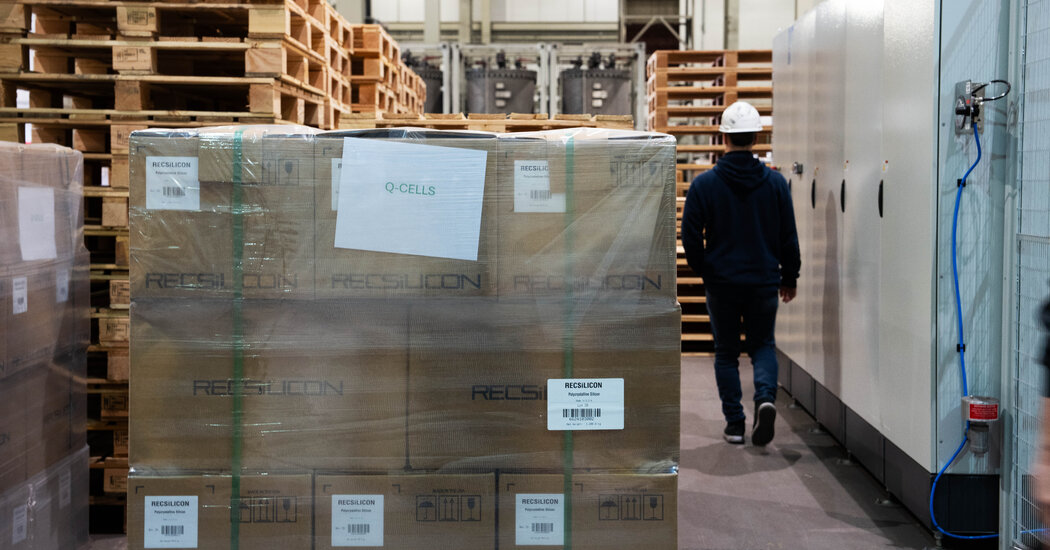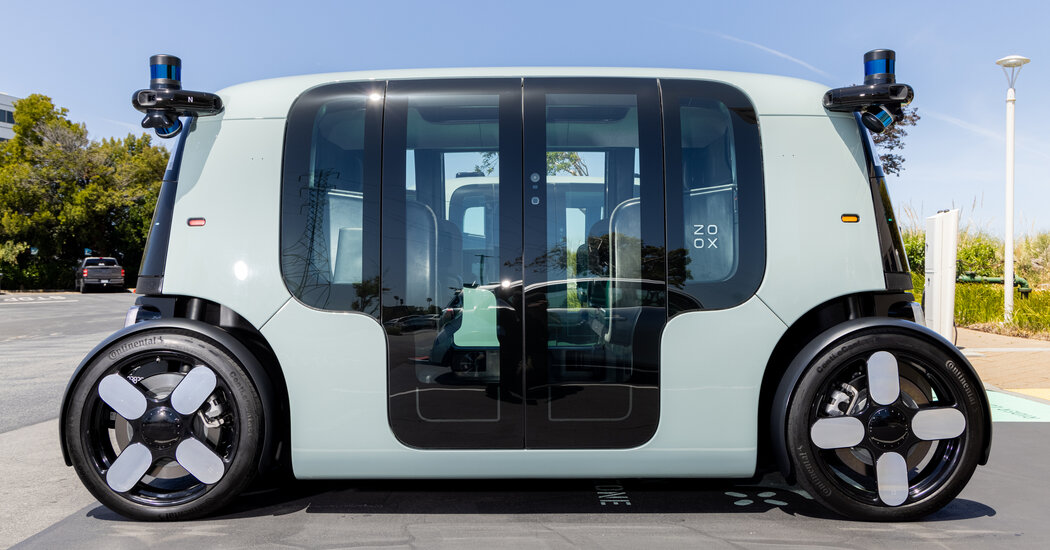A factory in Moses Lake, Wash., that shut down in 2019 will soon resume shipping a critical ingredient used in most solar panels that for years has been made almost exclusively in China.
The revival of the factory, which is owned by REC Silicon, could help achieve a longstanding goal of many American lawmakers and energy executives to re-establish a complete domestic supply chain for solar panels and reduce the world’s reliance on plants in China and Southeast Asia.
REC Silicon reopened the factory, which makes polysilicon, the building block for the large majority of solar panels, in November in partnership with Hanwha Qcells, a South Korean company that is investing billions of dollars in U.S. solar panel production. As part of the deal, Hanwha said this month that it had become the largest shareholder in REC Silicon, which is based in Norway.
Executives at the companies say they reopened the factory in part because of incentives for domestic manufacturing in the Inflation Reduction Act, President Biden’s signature climate law. They expressed hope that their decision would also encourage other companies to revive production of a technology that was created in the United States about 70 years ago.
“As a whole, the United States was No. 1,” said Kurt Levens, chief executive of REC Silicon. “People forget that. You need more cell manufacturing that is outside China.”
Factories in China and Southeast Asia produce more than 95 percent of the solar panels that use polysilicon and most of the components that go into those devices. Chinese manufacturers are so dominant that most manufacturers in the United States had stopped producing polysilicon, including REC Silicon.
Industry executives say the Chinese government’s tariffs on solar imports and the extensive financial and other support it has offered domestic manufacturers over the years have made it very difficult for companies elsewhere to compete. A smaller REC Silicon plant in Butte, Mont., and two other major companies — Hemlock and Wacker — still make polysilicon in the United States, but their products are largely used in semiconductor chips.
The Biden administration has used the Inflation Reduction Act and other policies to try to revive the U.S. solar manufacturing industry. That has spurred more manufacturing of solar panels and other renewable energy products.
But the administration’s efforts have been undercut recently by a sharp increase in the production of solar panels and their components in China and a big drop in prices of those products. That has been good for buyers of panels, like energy companies that are building solar farms, but has hurt U.S. manufacturers.
“Various trade actions, oversupply, dumping basically made it next to impossible to export polysilicon,” said Michael Carr, executive director of the Solar Energy Manufacturers for America Coalition, a trade group. “The polysilicon industry really went through hard times.”
The American Alliance for Solar Manufacturing Trade Committee, a group of solar manufacturers that includes Qcells and REC Silicon, petitioned the U.S. International Trade Commission and the Department of Commerce on Wednesday to investigate potentially illegal trade practices by Cambodia, Malaysia, Thailand and Vietnam and impose higher tariffs on products they export to the United States. The complaint focuses on companies that have their headquarters in China.
In addition to the allegations in the petition, solar manufacturers have raised concerns about the use of forced labor in production of polysilicon in China and other Southeast Asian countries, which the companies say has helped suppliers sell their products at low prices. Many companies in the solar industry have pledged to avoid products that rely on forced labor, but the sources of panels and their components can be hard to trace and verify.
The only U.S. solar manufacturer that has been able to maintain a healthy market share in the industry is First Solar, which produces thin film panels that do not use polysilicon.
Researchers and companies are developing other technologies, but polysilicon panels, which were created at Bell Labs in 1954, remain “the backbone of the silicon solar cell,” said Yogi Goswami, an engineering professor at the University of South Florida and the editor in chief of Solar Compass, a journal of the International Solar Alliance. “Innovative people in the United States found something that nobody else knew could be done.”
Qcells said it would take 100 percent of the polysilicon that REC Silicon produced in Moses Lake and planned to sell solar panels that were produced entirely within the United States. The company makes solar panels in Georgia and announced in January 2023 that it would invest $2.5 billion to expand its presence in that state.
REC Silicon processes silicon into a polysilicon, a granular substance that resembles black peppercorns. When the company delivers its product later this quarter, Qcells will turn those granules into ingots and then slice those into solar wafers that will be assembled into panels that can be mounted on roofs or open land.
REC Silicon began ramping up operations in November, hiring about 200 people and expanding the factory, said Mr. Levens, the chief executive. The plant sits on 200 acres in Moses Lake, an agricultural and industrial town roughly in the middle of Washington.
“It’s a cleaner, lower risk, and ultimately having the capability of doing it domestically is a long-term practical solution,” said Danielle Merfeld, global chief technology officer for Qcells. “We are a small fraction of the domestic opportunity. It should give not only policymakers but other solar manufacturers the confidence to make the investment. There’s room for a lot of solar capacity to grow in this country.”
Chuck Sutton, REC Silicon’s vice president of global sales and marketing, said he had never given up on the facility, which began production in 1984. “My focus the last several years was finding away to restart this plant,” he said. “We just kind of kept trying to keep it all together.”
During a tour of the factory this week, scores of crates filled with boxes of polysilicon granules were visible on the floor, ready to be shipped. REC Silicon executives said they hoped this was just the start of a new wave of growth for the plant: The company owns another 260 acres that they said could be used to expand operations.
Executives said they would look for opportunities to offer their product to more customers like Qcells that are interested in producing ingots and wafers in the United States. Mr. Levens said the government might need to provide more incentives to invest in manufacturing.
“It’s really important for us as a country to be able to maximize in terms of the opportunities presented by the Inflation Reduction Act,” he said. “Maybe there needs to be further belts and suspenders in terms of how to do this.”







